BANDICOOT
Many people in coastal
eastern Australia see small, cone-shaped holes in their lawns and never
realize that a bandicoot has been at work scenting a spider, grub, earthworm
or juicy root, then digging it out with its strong forepaws and snout.
The food is held in the forepaws and crunched noisily. During the day
a Bandicoot shelters alone in a ground nest. At night it feeds on worms,
insects and fungi.
When these rabbit sized omnivores feed on road verges they often fall
victim to traffic and they need ground cover for shelter. However, they
seem to be coping with modern life. Other bandicoots and their relatives
the bilbies have not been so fortunate. The Pig-Footed and Desert Bandicoots
and the Lesser Bilby are presumed extinct.
|
Southern
Brown Bandicoot
|
|
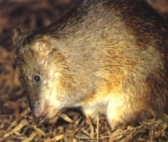 |
The Southern Brown Bandicoot is found in south-western and south-eastern Australia. It is the size of a cat with a pointed muzzle, humped back and thin tail. It is grey-brown above and white below. |
|
Eastern
Barred Bandicoot
|
|
| The Eastern Barred Bandicoot is restricted to Tasmania and a small area of Victoria. | 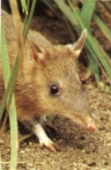 |
|
Western
Barred Bandicoot
|
|
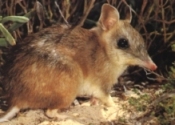 |
The Western Barred Bandicoot is now found only on Bernier and Dorre Islands in Shark Bay, Western Australia. |
|
Golden
Bandicoot
|
|
| The rare Golden Bandicoot is now found only on Barrow Island in Western Australia and in the far northwest Kimberley Region. | 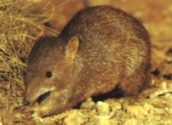 |
|
Greater
Bilby
|
|
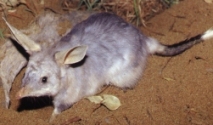 |
The soft furred, long eared Greater Bilby, now exists only in a few desert locations. It lives in dry, hot areas. Destruction of its habitat, competition from rabbits, predation by foxes and disease, have contributed to its extreme rarity. Efforts are being made to save this species from the fate of the Lesser Bilby, which is very likely extinct. |
| BACK TO MAMMALS |
| mammals | | | birds | | | reptiles | | | spiders |